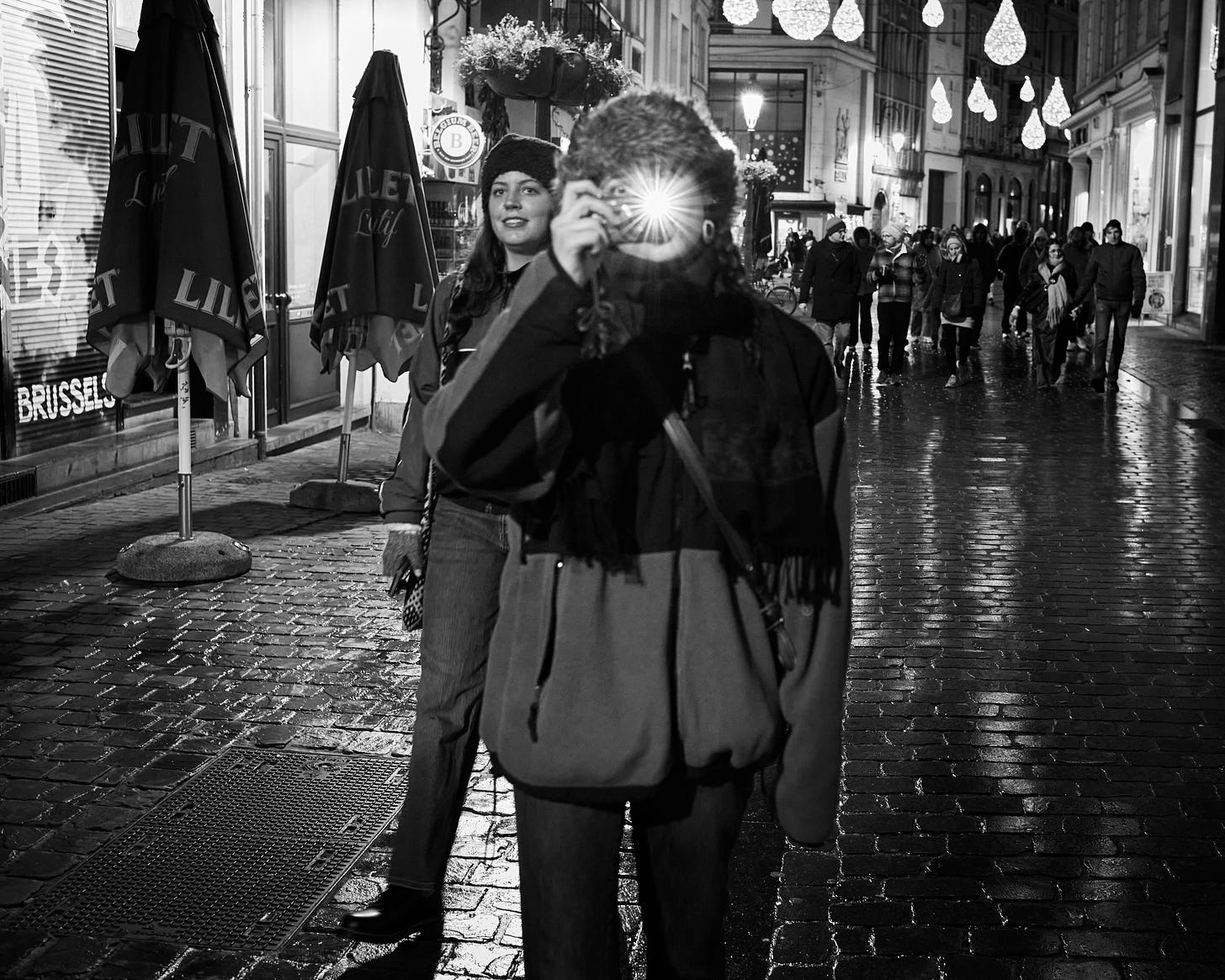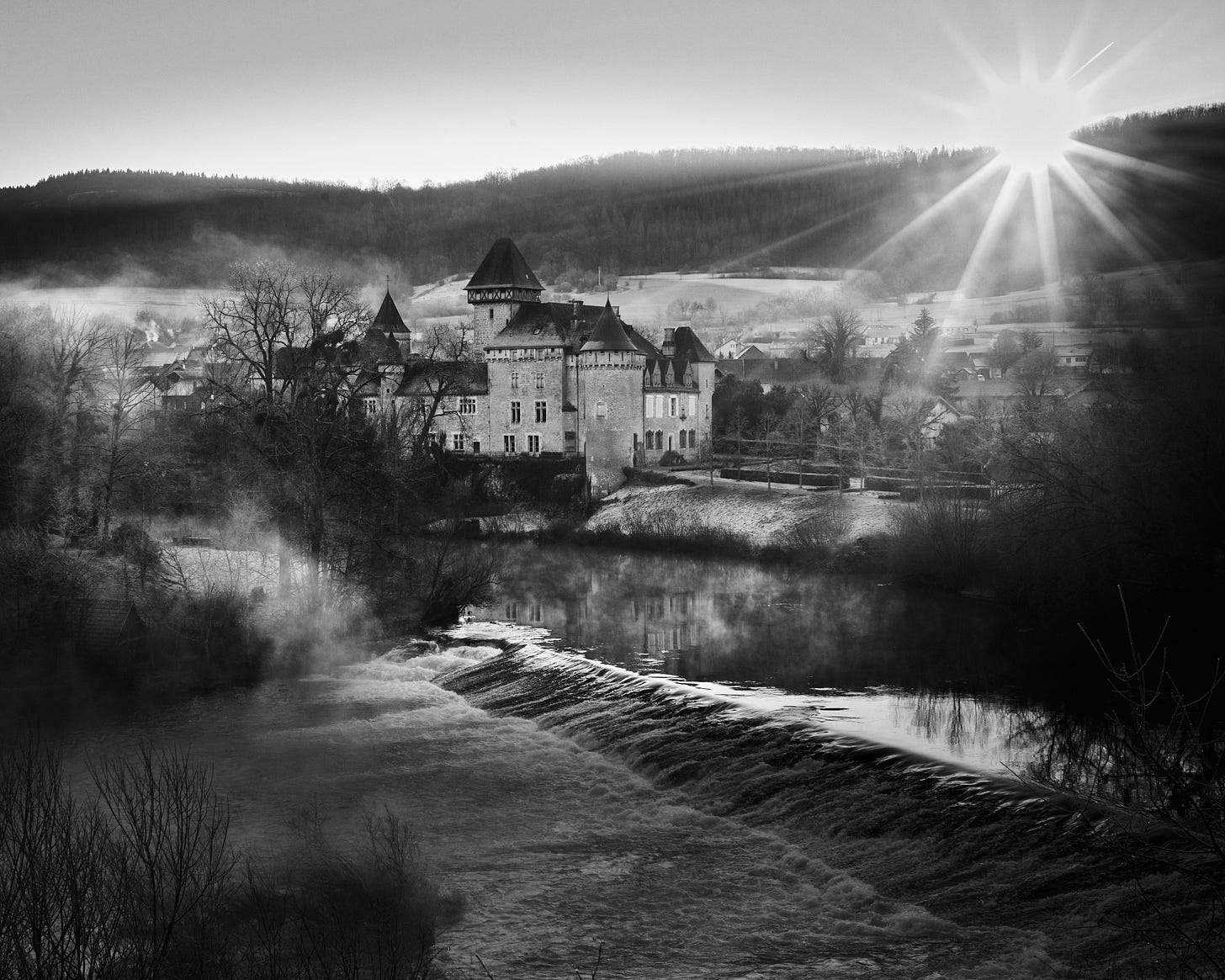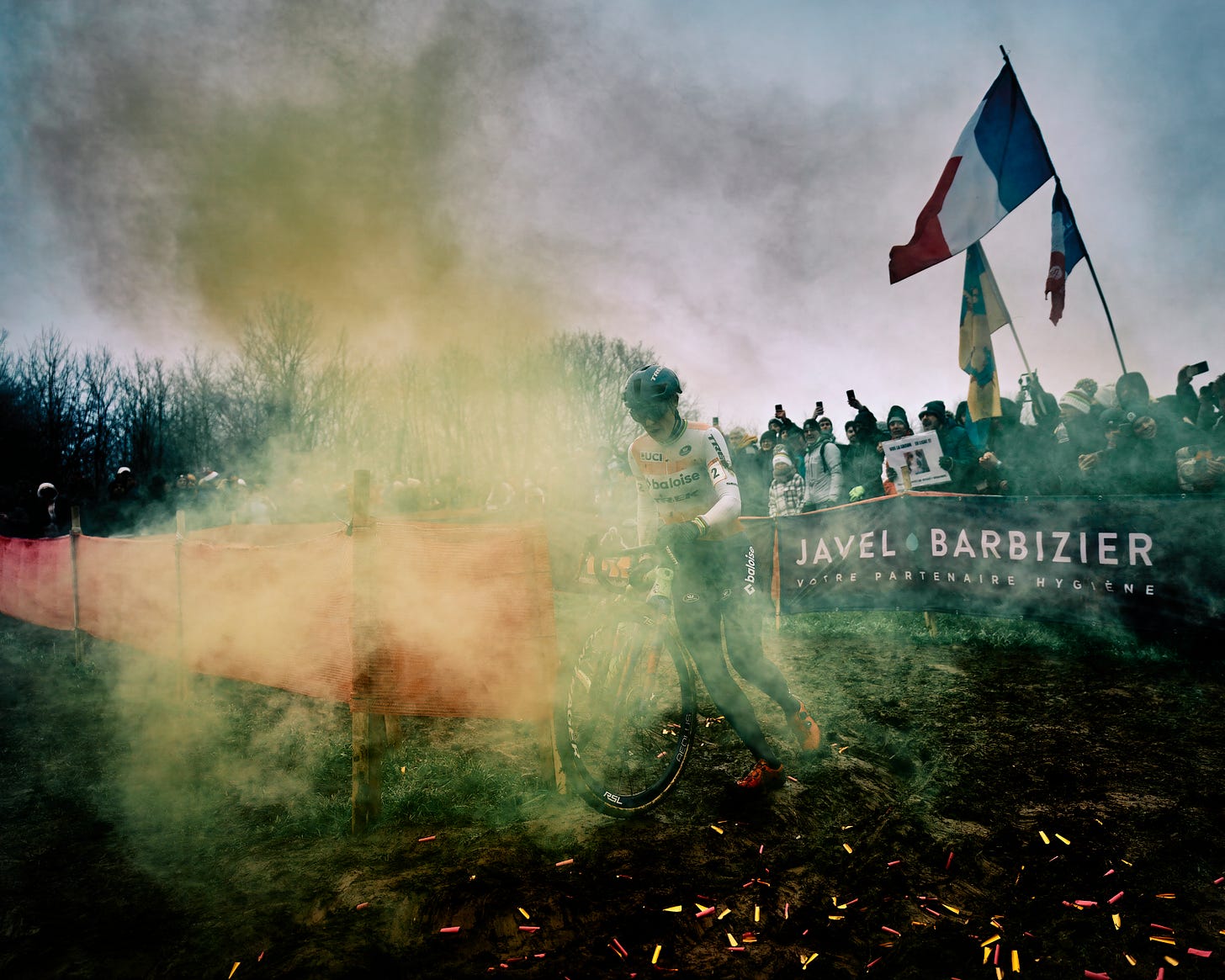
This season has been full gas since the domestic UCI season started at the Englewood Open in Wisconsin September 5 and 6. And for me, the needle hit “E” about a week ago. I’m cracked.
The day after US Cyclocross Nationals, I drove home from Louisville, Kentucky, crawled into bed in the wee hours of the morning, and then, 24 hours later, headed to Europe for Kerstperiode. Once there, I drove a few thousand kilometers, shepherding riders and gear to World Cup recon days and races, shot multiple races, edited 1000s of photos, and kept an eye on my job back home. It was a big push.
I’m not complaining. I loved every second of it. But it took my family's arrival in Brussels last week to realize how nonstop this season has been. Over the past four days, I've been to Christmas markets in Brussels, Gent and Brugge1. We’ve also visited a few art museums, slept late (relatively speaking), and watched races on television while in the time zone of those same races. It was nice.
Before discussing my time away from the races, I want to touch on the last two World Cup races I attended: Gavere and Besçanson.
Gavere has a big climb and a big descent, with lots of mud. It’s also really tough to get around with the large crowds. That’s what I was told by those who came before me. After hearing stories from 2023 about being unable to move once inside the venue and how tough it was to shoot, I wasn’t looking forward to this one. Much like a rider who doesn’t want to destroy their bike on a recon lap, I opted not to preview the rain-soaked venue and instead went into it blind but considerably less muddy.
With some extra time before the start of the racing, I explored the secondary entrances and found a lightly used one past the pits at the lowest point on the course. Although out of the way and inconvenient for most people attending, it was perfect for me. By entering through the back door, I could maneuver quickly around the course and easily get to the big descent with the bouncy castle barrier.
At the descent, the organizer prohibited anyone from entering the left side of the course, photographers uitezonderd2. At most races, these prohibitions are met with 100 percent compliance at the beginning of the day and fall to about 50 percent effectiveness by the start of the men’s race when spectators begin to test the vigilance and conviction of the stewards.
At Gavere, only a handful of self-appointed media members crossed the course barriers to join the photographers. From our semi-protected spot, we had an unobstructed view of the descent and a great view from under the television camera riser on the following climb. From there, I could trudge up the hill and shoot the long climb before the bouncy-castle descent, and the crowd-lined straight before the finish line.
In the end, Gavere was manageable. The crowd size was again down from last year despite Mathieu van der Poel racing. It seems that without Wout, MvdP does not have the same draw he has had in the past.
One moment that the broadcast may have missed but was notable for North American cyclocross fans was the battle between Vida Lopez del San Roman and Caroline Mani. What at first looked like Mani working hard to avenge her losses to Lopez de San Roman at the North Carolina Grand Prix, by sprinting the American National Champ to the line for 18th place, turned out to be more significant.
To qualify for a spot on the French Worlds squad, Mani needed to be in the top 16, and she was desperately trying to move up. Lopez de San Ramon was just one rider between her and a trip home for Worlds. This wasn’t revenge; it was ambition.
Although Mani missed out in Gavere and had a relatively disappointing showing at her home race in Besçanson, she bounced back in the Dendermonde mud to place 14th and secure a spot on the French squad for Worlds.
Besçanson is a race that succeeds primarily on vibes. The venue is a multi-sport facility. Like Dublin and Troyes, the organizers have a lot of real estate to play with and aren’t afraid to use it. Unlike your typical Belgian race, which is crammed into a few acres of land, Besçanson isn’t scared to expand. That being said, getting from one end to the other wasn't horribly difficult. There were no chokepoints like Diegem or Gavere, and the crowd moved freely from one feature to the next.
No feature, however, could beat the makeshift Alpe d’Huez switchback with its flares, football chants and chainsaws. Much like we talked about last time with De Kuil, if you were going to pick just one feature to watch for the entire race in Besçanson, it would be the muddy switchback.
On a final note for Besçanson, the folks who earned their keep on that day were the mechanics. The walk from pro team parking to the pits was probably close to two kilometers and included a sturdy climb on the way back. It was cold, wet and muddy on race day, and if you went to the pits to support more than one racer, you most likely weren’t going back to the vehicles for hours.

Belgium as a Civilian
We occasionally get questions from readers and podcast listeners who want to visit Belgium for the Kerstperiode. These questions mainly revolve around how to attend races and where to stay. So here are a few tips. Hopefully, Ethan will chime in during his Big Picture posts with even more travel hacks. He’s pretty much mastered traveling to races by train and bus.
First, come for the cyclocross, stay for the markets. The winter markets in Brussels, Gent and Brugge are worth visiting. I’m sure Antwerp is the same, but I haven’t been. I met my family in Brussels after Besçanson, and we visited the holiday market before taking a train to Diegem for the night race.
As far as ease of travel goes, Diegem is simple. You pretty much get off the train at the planks. Once in the venue, it’s an entirely different story. If you want to WATCH a cyclocross race live, Diegem may not be the best choice. You’re going there for the party and the spectacle, not the sightlines.
A few things about train travel in Belgium. First, the SNCB system will get you from city to city. They have an app. If you use the trip planner, it’s pretty straightforward. The most expensive trips start and end at the Brussels airport. They put a pretty hefty airport tax on those trips. Everything else is more than reasonable. For example, it's about 10 euros to get from Gent to Brugge.
Once you purchase a ticket on the app, you get on the train and go. Once moving, a ticket-taker will come around to scan the QR code of your ticket.
For inner-city travel, De Lijn runs the trams and buses and also has an app. In Gent, every tram trip costs 2.5 euros. I’ve heard rumors of random ticket checkers on trams but never encountered one.
The biggest incentive to buy a ticket is that you can track your trip on the app and know where to get off. The announcements are tough to hear, and sometimes the light boards with the next stop listed don’t work. So you need to stay vigilant to make sure you get off at the right stop, especially if you have luggage and cobbled roads are involved. Ask me how I know.
Several races on the calendar are accessible by train. You may have to walk a kilometer or so once at your destination, but it’s a nice way to experience a race without having to worry about parking in a remote mud bog kilometers from the course.
And when you’re not going to a race, traveling the country by rail is about as stress-free as travel gets, and you don’t have to worry about those pesky speed cameras that seem to be everywhere. Sorry Avis.
I think that’s enough travel talk for now. If you want more, let me know. I can always discuss other hot topics, such as " Why don’t French-owned petrol companies want my business?” or how you can tell a foreigner by how they eat their frites.
Back to Europe in a week for Maasmechelen, Hoogerheide and Worlds. Tank is full and ready for more.
I started writing this last week in Belgium. Finishing it up in the U.S. a few days later.












Here for the frites etiquette commentary! 🍟
Love reading these travelogues at least as much as the race reports. More please 😉